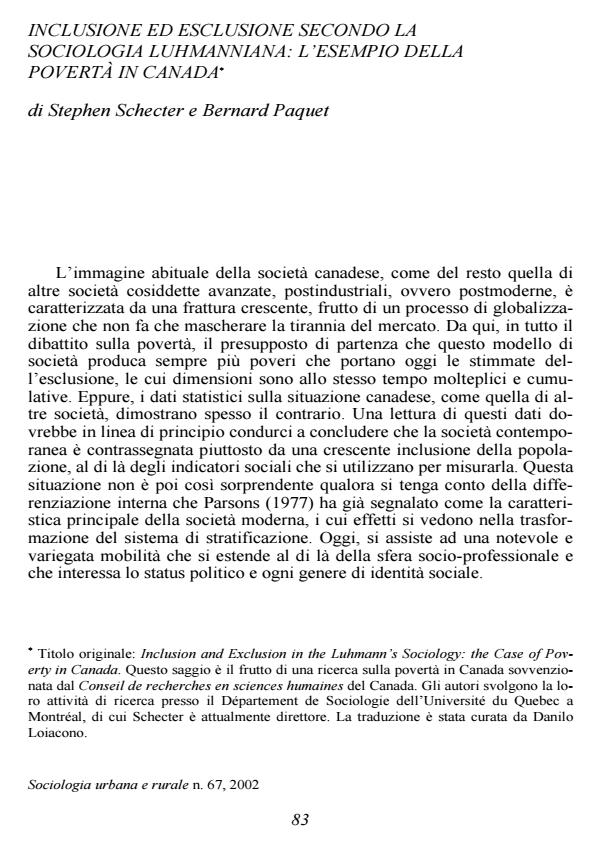Inclusione ed esclusione secondo la sociologia luhmaniana: l'esempio della povertà in Canada
Journal title SOCIOLOGIA URBANA E RURALE
Author/s Stephen Schecter, Bernard Paquet
Publishing Year 2003 Issue 2002/67
Language Italian Pages 18 P. File size 154 KB
DOI
DOI is like a bar code for intellectual property: to have more infomation
click here
Below, you can see the article first page
If you want to buy this article in PDF format, you can do it, following the instructions to buy download credits

FrancoAngeli is member of Publishers International Linking Association, Inc (PILA), a not-for-profit association which run the CrossRef service enabling links to and from online scholarly content.
Since the 1980s, the phenomena linked to poverty and social precarity have generally been addressed using the concept of exclusion, a concept popularized in Europe and developed particularly in France by authors such as Robert Castel and Serge Paugam. While this concept might apply to the French case, Canadian reality seems quite different. Various statistics relating to poverty, inequality and social mobility in Canada do not corroborate the exclusion hypothesis. For the authors, the opposite phenomenon is at work, namely increasing inclusion, in the sense suggested by the sociology of Niklas Luhmann. In this text Stephen Schecter and Bernard Paquet shall confront the two hypotheses with Canadian statistical data in order to show that the long term tendency of contemporary society points toward inclusion.
Stephen Schecter, Bernard Paquet, Inclusione ed esclusione secondo la sociologia luhmaniana: l'esempio della povertà in Canada in "SOCIOLOGIA URBANA E RURALE" 67/2002, pp , DOI: